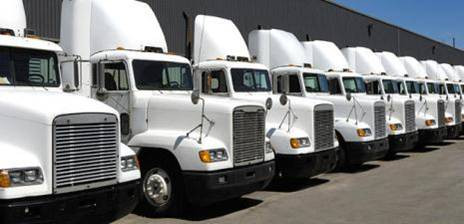Cross-border road transport by AEC roadmap
Thời sự - Logistics - Ngày đăng : 08:00, 01/01/1970
In 2015, 10 ASEAN countries, including Vietnam will be come Asean Economic Community (AEC). And thanks to the unity, logistics and transport of ASEAN countries will be effectively connected. In the future, road transport has been choosen as a target to reach by AEC. Therefore, there should be a program to enhance competency of cross-border transport businesses.

TOO MANY ENTANGLEMENTS
Using cross-border road transport saves more time for businesses than using sea transport and it is also cheaper than using air transport. However, it is still 3 times higher in cost than using sea transport.
It takes only a day for cross-border road transport from China to Vietnam and vice versa, but it takes 4 days by sea. And statistics shows that cost for using road transport is only 75% of cost for using air transport; but it is 3 times higher than using sea transport. For example, it costs USD 2,000 to transport from Shanghai-Hai phong- HCMC and vice versa for sea transport, but USD 6,000 using road transport.
Another example, it costs USD 900 for a 20-feet container and USD 1,100 for a 40-feet one for customs fee. On the contrary, it costs around USD 330 for customs fee using sea transport.
Besides the issue of cost, road infrastructure is another challenging issue. Laotian transport businesses have to choose in hesitation two routes: Lao-Laem Chabang (Thailand) or Lao-Danang (Vietnam). It is shorter in distance to take Lao-Danang route, around over 200 kilometers. However, many Laotian businesses are favorably using Lao-Laem Chabang route for the sake of its good infrastructure, which has been long developed by Thai government, not using Lao-Danang route, to which has just been paid attention lately.
THE NEED FOR A PROGRAM OF ENHANCEMENT
The matter of cross-border transportation has been paid attention to not only by businesses but also by Vietnam Government. Although customs procedures have been much facilitated, it is rather complicated. In the past, in cross-border transport, drivers had to unload cargo and then change trucks. But lately, only container swaps is carried out. And it takes 2 hours at most for clearance and container swap procedures.
Besides matters with customs, investments in the East-West Economic Corridor (EWEC) have been speeded up by the Government. From the Government’s moves, Vietnam businesses do feel the need of enhancements of competitive abilities. Therefore, it is necessary that there should be a program of enhancements that gives standards for transporters – the standards of fleet management skill, security management skills, insurance and driver’s senses and skills as well.
According to Mr. Nguyen Don Le – Director’s Assistant of KART (Vietnam) - a well-developed business in China and Hong Kong markets, his company has big customers on Bangkok – Shanghai route and their cargo – mostly high-tech goods- needs liability insurance. Although it is mentioned in documents from Directorate for Roads of Vietnam, it has not been deployed in Vietnam.
Mr. Nguyen Duy Minh – Member and Chief of Finance and Membership Development of VIFFAS said there have been many organizations like GMS or forwarding associations in other countries encouraging cross-border transport. This is an important matter in connecting AEC. Road transport in ASEAN countries, especially in GMS, will be gradually replacing other types of transport. In Vietnam, businesses in the South have been carrying out cross-border transport to Cambodia (Phnom Penh); businesses from Thailand have been using routes in the center or in the North of Vietnam to cross-border transport to China.
| On December 13th-14th, 2012 APICS in coordination with the Transport Development and Strategy Institute will hold a conference on cross-border transport issues, especially for issues on the route of Vietnam – Laos – Cambodia – Thailand. In preparation for ASEAN economic community to be established in 2015, APICS has a fund to develop enhancement programs for cross-border transport business in 5 years. The program will start in Vietnam and Thailand in 2012, in Laos in 2013 and then in other countries as Cambodia, Myanmar… This is a good opportunity for Vietnamese businesses to enhance the competitive abilities in preparation for ASEAN single market in 2015. |
